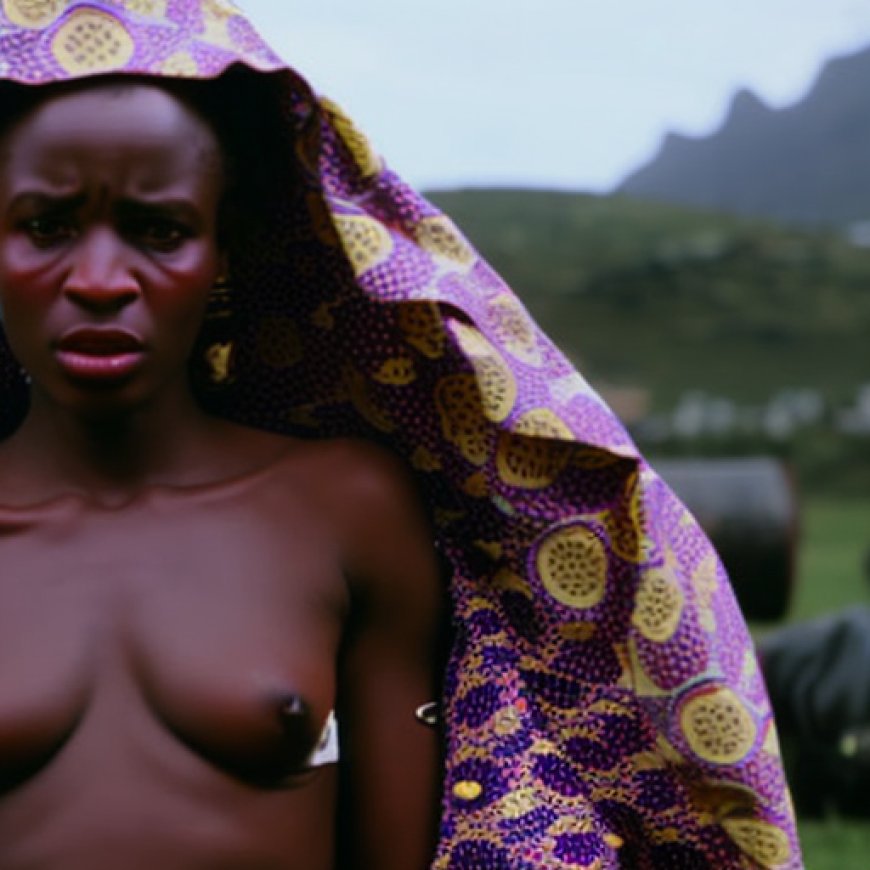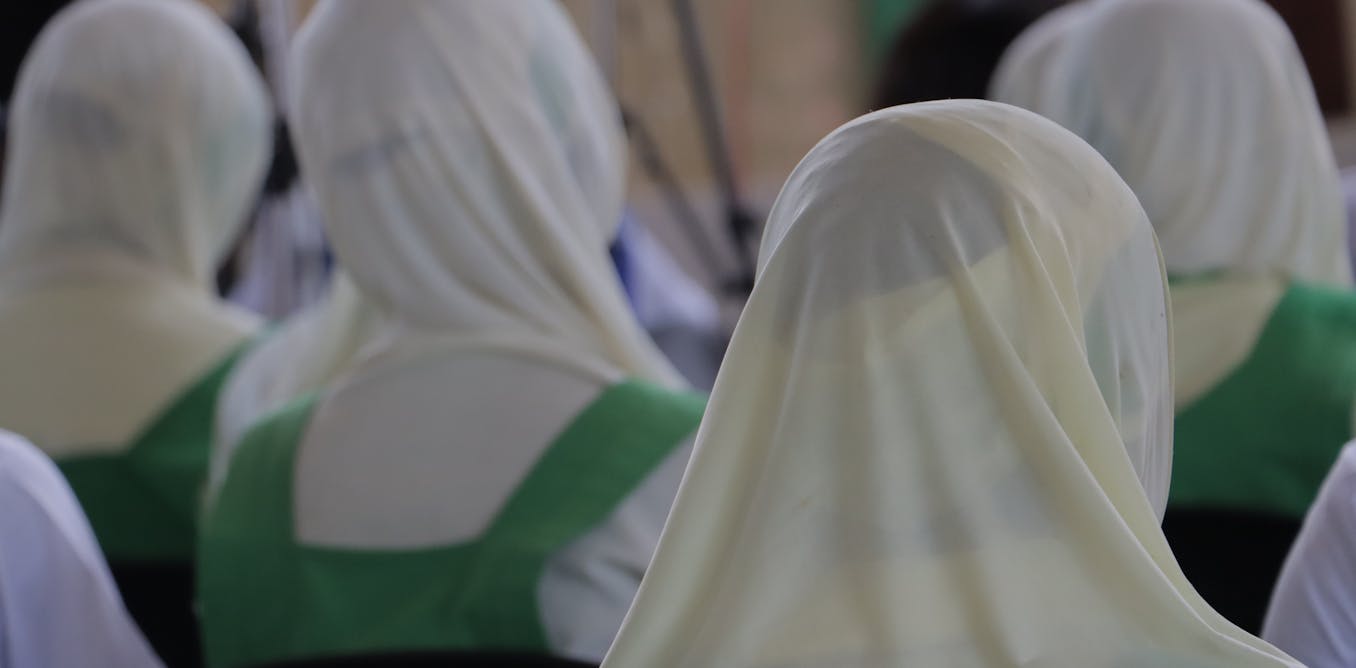Female genital mutilation is on the rise in Africa: disturbing new trends are driving up the numbers
Female genital mutilation is on the rise in Africa: disturbing new trends are driving up the numbers The Conversation


Sustainable Development Goals and Female Genital Mutilation

Introduction
In January 2023, the lifeless body of thirteen-year-old Salamatu Jalloh was found in a village in north-west Sierra Leone. She, along with two other girls, bled to death after participating in a secret Bondo society initiation into womanhood. This tragic incident sheds light on the issue of female genital mutilation, which is a violation of human rights and a major obstacle to achieving the Sustainable Development Goals (SDGs).
Female Genital Mutilation: A Global Concern
According to the latest Unicef report on female genital mutilation, there are currently 230 million girls and women alive today who have survived this practice. Most of these cases, accounting for 144 million, occur in African countries. Despite efforts to end this practice, there are still 30 million more women and girls who have undergone female genital mutilation compared to eight years ago. This highlights the urgent need to address this issue and work towards its elimination.
Reasons for Female Genital Mutilation
Supporters of female genital mutilation believe that it maintains cleanliness, increases a girl’s chances of marriage, protects her virginity, and preserves family honor. They also argue that it improves fertility and prevents stillbirths. However, these reasons are not supported by any scientific evidence. In fact, female genital mutilation has no health benefits and causes immediate and long-term physical and psychological harm to girls and women.
Female Genital Mutilation in African Countries
Some African countries have made progress in reducing the prevalence of female genital mutilation. However, in countries like Somalia, Guinea, and Djibouti, the practice remains widespread, with prevalence rates as high as 99%. The challenge of addressing female genital mutilation is further compounded by conflict, population growth, climate shocks, disease, and food insecurity in countries like Somalia, Sudan, and Ethiopia.
Challenges and Alarming Trends
There are several alarming trends that make the elimination of female genital mutilation even more challenging:
- Backlash by conservatives: In some countries, religious leaders are demanding the repeal of laws banning female genital mutilation, undermining efforts to protect girls’ rights.
- Secret procedures: In countries where the practice is banned, it often goes underground, making it harder to accurately capture rates of female genital mutilation.
- Shifts towards “less severe” forms: Some communities consider certain forms of female genital mutilation, such as the removal of the clitoris without sewing up the vagina, as less harmful and not qualifying as female genital mutilation.
- “Medicalized” procedures: Female genital mutilation performed by trained healthcare professionals is seen by some as legitimate and safer, leading to an increase in these procedures.
- Destabilization and eroded rights: Conflict and climate change have deepened poverty and displacement, making families more vulnerable and increasing the commodification of girls through practices like child marriage and bride price.
Conclusion
Eliminating female genital mutilation is crucial for achieving the SDGs and ensuring the well-being and rights of girls and women. The current rate of decline in this practice is insufficient, and a greater understanding of the shifting trends is needed to accelerate progress. Efforts must be made to address the underlying reasons for female genital mutilation, engage communities, and promote gender equality and human rights.
SDGs, Targets, and Indicators
-
SDG 5: Gender Equality
- Target 5.3: Eliminate all harmful practices, such as child, early, and forced marriage and female genital mutilation.
- Indicator 5.3.1: Proportion of women aged 20-24 years who were married or in a union before age 18.
- Indicator 5.3.2: Proportion of girls and women aged 15-49 years who have undergone female genital mutilation/cutting.
-
SDG 16: Peace, Justice, and Strong Institutions
- Target 16.2: End abuse, exploitation, trafficking, and all forms of violence against and torture of children.
- Indicator 16.2.3: Proportion of young women and men aged 18-29 years who experienced sexual violence by age 18.
-
SDG 3: Good Health and Well-being
- Target 3.4: By 2030, reduce by one-third premature mortality from non-communicable diseases through prevention and treatment and promote mental health and well-being.
- Indicator 3.4.1: Mortality rate attributed to cardiovascular disease, cancer, diabetes, or chronic respiratory disease.
- Indicator 3.4.2: Suicide mortality rate.
| SDGs | Targets | Indicators |
|---|---|---|
| SDG 5: Gender Equality | Target 5.3: Eliminate all harmful practices, such as child, early, and forced marriage and female genital mutilation. | Indicator 5.3.1: Proportion of women aged 20-24 years who were married or in a union before age 18. Indicator 5.3.2: Proportion of girls and women aged 15-49 years who have undergone female genital mutilation/cutting. |
| SDG 16: Peace, Justice, and Strong Institutions | Target 16.2: End abuse, exploitation, trafficking, and all forms of violence against and torture of children. | Indicator 16.2.3: Proportion of young women and men aged 18-29 years who experienced sexual violence by age 18. |
| SDG 3: Good Health and Well-being | Target 3.4: By 2030, reduce by one-third premature mortality from non-communicable diseases through prevention and treatment and promote mental health and well-being. | Indicator 3.4.1: Mortality rate attributed to cardiovascular disease, cancer, diabetes, or chronic respiratory disease. Indicator 3.4.2: Suicide mortality rate. |
Analysis
1. Which SDGs are addressed or connected to the issues highlighted in the article?
The issues highlighted in the article are connected to SDG 5: Gender Equality, SDG 16: Peace, Justice, and Strong Institutions, and SDG 3: Good Health and Well-being.
2. What specific targets under those SDGs can be identified based on the article’s content?
Based on the article’s content, the specific targets that can be identified are:
– Target 5.3: Eliminate all harmful practices, such as child, early, and forced marriage and female genital mutilation.
– Target 16.2: End abuse, exploitation, trafficking, and all forms of violence against and torture of children.
– Target 3.4: By 2030, reduce by one-third premature mortality from non-communicable diseases through prevention and treatment and promote mental health and well-being.
3. Are there any indicators mentioned or implied in the article that can be used to measure progress towards the identified targets?
Yes, there are indicators mentioned in the article that can be used to measure progress towards the identified targets:
– Indicator 5.3.1: Proportion of women aged 20-24 years who were married or in a union before age 18.
– Indicator 5.3.2: Proportion of girls and women aged 15-49 years who have undergone female genital mutilation/cutting.
– Indicator 16.2.3: Proportion of young women and men aged 18-29 years who experienced sexual violence by age 18.
– Indicator 3.4.1: Mortality rate attributed to cardiovascular disease, cancer, diabetes, or chronic respiratory disease.
– Indicator 3.4.2: Suicide mortality rate.
These indicators can be used to measure progress towards the targets of eliminating harmful practices, ending abuse and violence against children, and reducing premature mortality from non-communicable diseases.
4. Create a table with three columns titled ‘SDGs, Targets and Indicators” to present the findings from analyzing the article.
| SDGs | Targets | Indicators |
|---|---|---|
| SDG 5: Gender Equality | Target 5.3: Eliminate all harmful practices, such as child, early, and forced marriage and female genital mutilation. | Indicator 5.3.1: Proportion of women aged 20-24 years who were married or in a union before age 18. Indicator 5.3.2: Proportion of girls and women aged 15-49 years who have undergone female genital mutilation/cutting. |
| SDG 16: Peace, Justice, and Strong Institutions | Target 16.2: End abuse, exploitation, trafficking, and all forms of violence against and torture of children. | Indicator 16.2.3: Proportion of young women and men aged 18-29 years who experienced sexual violence by age 18. |
| SDG 3: Good Health
Copyright: Dive into this article, curated with care by SDG Investors Inc. Our advanced AI technology searches through vast amounts of data to spotlight how we are all moving forward with the Sustainable Development Goals. While we own the rights to this content, we invite you to share it to help spread knowledge and spark action on the SDGs. Fuente: theconversation.com
Join us, as fellow seekers of change, on a transformative journey at https://sdgtalks.ai/welcome, where you can become a member and actively contribute to shaping a brighter future.
|








